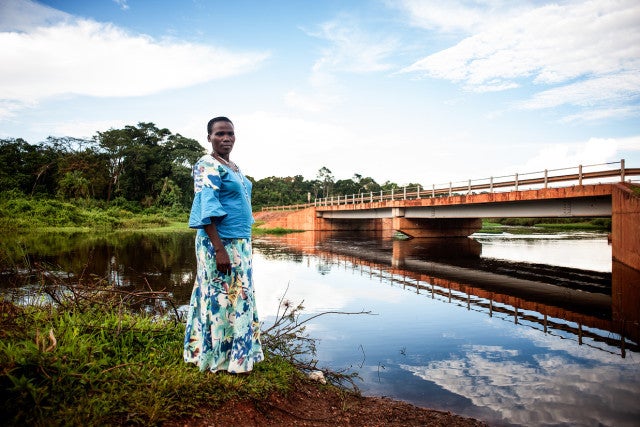
Most Americans have never heard of them. But intestinal worms known as soil-transmitted helminths (STHs) were once endemic across Appalachia and the southeastern United States.
It’s no coincidence that the few places in the United States that once had STH infections were also the poorest pockets of the country. On a global level too, “neglected tropical diseases” (NTDs) like STH infections are concentrated in the most impoverished corners of the world, in urban slums, conflict zones, and the most remote, rural areas where health systems are weak and there is poor social infrastructure.
In fact, it’s not the diseases that are neglected, but the people who suffer from them and are vulnerable to them. The group of 17 diseases with Gothic-sounding names like lymphatic filariasis (elephantiasis), onchocerciasis (river blindness), and schistosomiasis cause horrific symptoms and, because they are chronic infections, may have lifelong implications, particularly since they often impede normal childhood development.
The irony is twofold.
First, for diseases with little name recognition, they have a disproportionate impact, debilitating more than a billion people each year.
Second, NTDs are preventable and treatable. The United States was able to control human intestinal worms once we had flush toilets, clean water, and sewage disposal. With adequate sanitation and clean water, mass drug distribution, improved diagnostics, and preventive treatments, many NTDs can be eliminated. We’re close to this with river blindness in the Americas, and we’re nearing the “last mile” with others.
New partnerships present exciting opportunities to achieve the World Health Organization’s 2020 goal of controlling, eliminating, or eradicating 10 NTDs. For example, with correct diagnosis and promising results from triple-drug therapy, we may be able to rapidly accelerate the elimination of lymphatic filariasis, which causes extreme swelling of the limbs and threatens nearly 950 million people.
Likewise, earlier this year, PATH announced a $25 million public-private partnership pursuing US FDA approval for the drug tribendimidine (TrBD), which could then be incorporated into global deworming campaigns targeting places where soil-transmitted infections cause significant disability. If cases of resistance to existing drugs emerge, as they have in animals, TrBD offers an important alternative to current approaches. Combined with efforts to strengthen health systems and ensure adequate sanitation, new and improved treatment options can help accelerate the elimination of STH infections as a public health problem.
In order for mass drug administration campaigns to work against diseases like STH infections, lymphatic filariasis, onchocerciasis, schistosomiasis, and trachoma, they must be coupled with diagnostics to monitor progress and assess for reemergence of transmission. Therefore, PATH is also working with partners to advance inexpensive, easy-to-use diagnostic tools for NTDs using finger-prick blood samples to detect evidence of infection or exposure.
But new tools alone aren’t enough. Effective elimination strategies must acknowledge and address the sociodemographic dimensions of NTDs. In countries such as Senegal, India, the Democratic Republic of Congo, and others, we partner with ministries of health and other allies so that their citizens, like most Americans, no longer have to worry about NTDs.
Focusing attention on services for the people and places most affected by NTDs has global benefits. These diseases are markers of risk, as they indicate where health systems are overtaxed. The weaknesses exposed by the Ebola and Zika outbreaks in West Africa and Central America—the need for stronger surveillance, rapid diagnostics in remote places, stronger prevention, and treatment options—are the same ones that perpetuate the cycle of NTDs.
The way forward is clear. The places that would most benefit from the elimination of NTDs are exactly the ones that could make the world a safer place from emerging infections, due to stronger health systems with access to low-cost, effective diagnostic tools and treatments. The question—and the opportunity—is whether donors and the global health community will focus on solving this problem and no longer neglect these diseases and the people who suffer from them.
This article is part HuffPost’s Project Zero campaign, a yearlong series on neglected tropical diseases and efforts to eliminate them. This series is supported, in part, by funding from the Bill & Melinda Gates Foundation. All content is editorially independent, with no influence or input from the foundation. If you’d like to contribute a post to the series, send an email to ProjectZero@huffingtonpost.com. And follow the conversation on social media by using the hashtag #ProjectZero.
